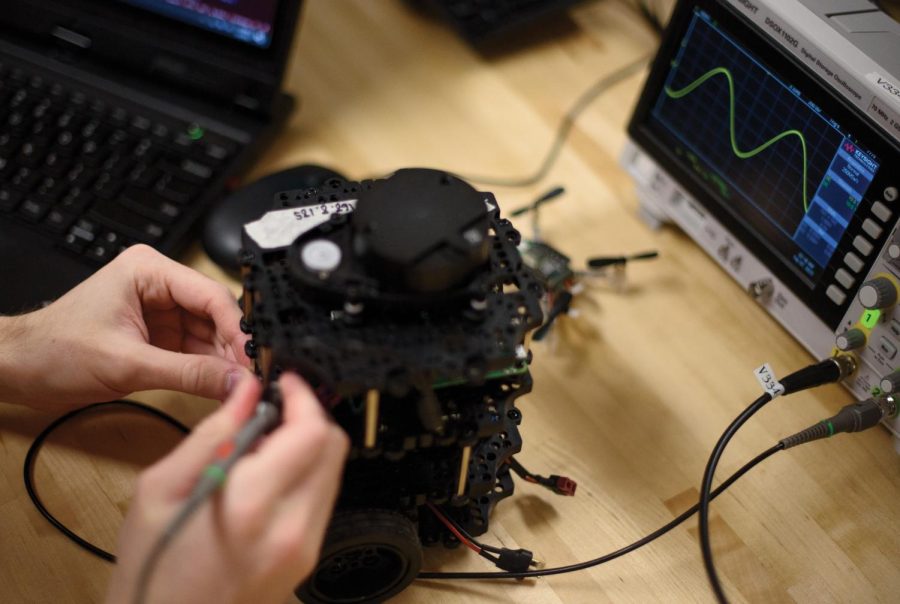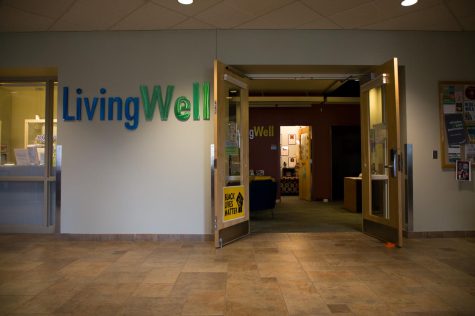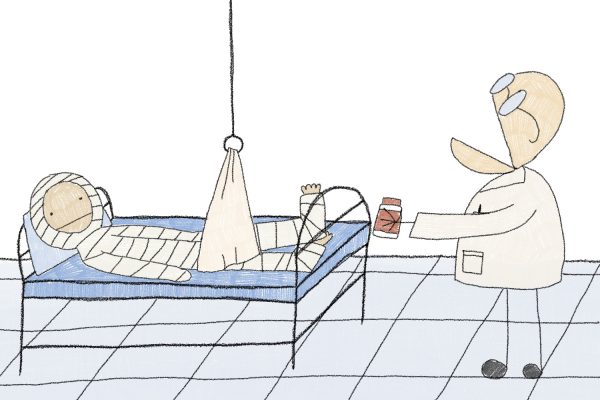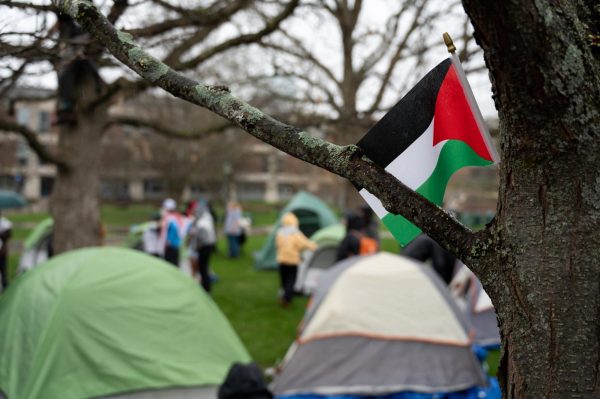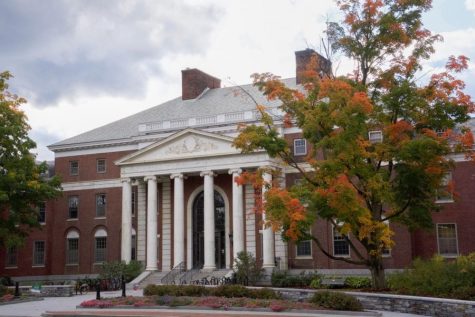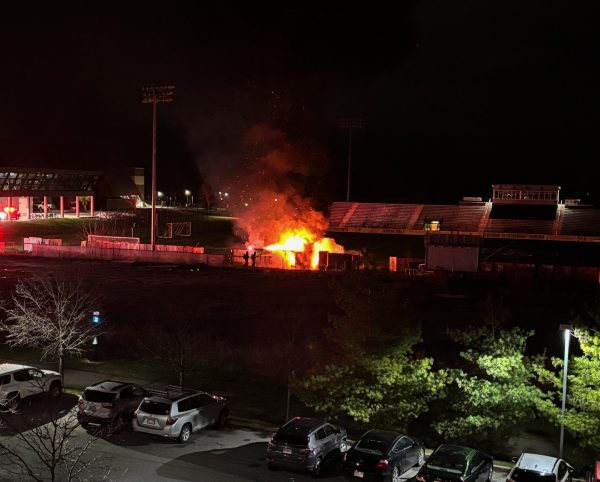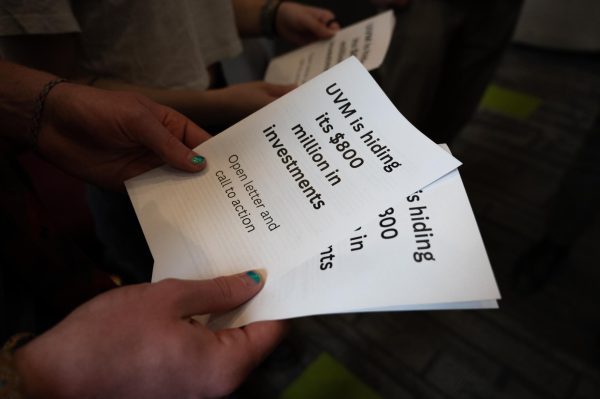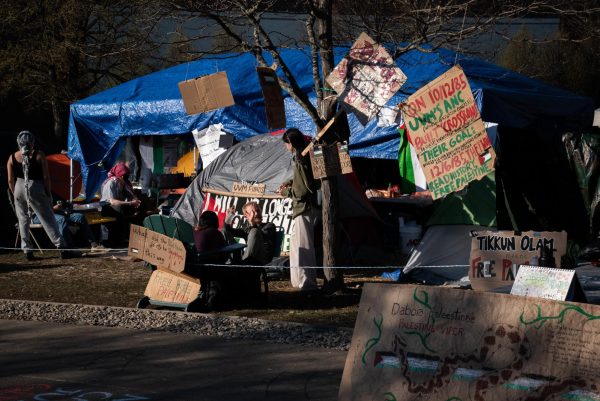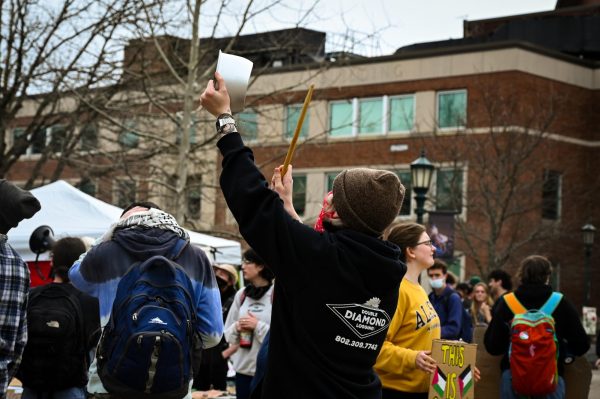Sponsored research funds for UVM grow in 2022, double those of 2013
An engineering student working in a lab in Votey 334 Feb 6. In 2022, the College of Engineering and Mathematical Sciences received $16.3 million in research funds out of $214 million in total sponsored funding across the University.
UVM saw annual sponsored research funds more than double last year compared to 2013, according to UVM’s 2022 Research Review.
The $214 million in sponsored research funds the University received made 2022 its third consecutive year amassing record levels of research funding.
Richard Page, dean of the Larner College of Medicine, said UVM is close to reaching R1 status, a classification by the Carnegie Classification of Institutions that indicates UVM is a doctoral university with very high research activity.
“This has been a priority of our president, Suresh Garimella, to enhance our stature in many different ways, but among them is as a research university, ” Page said.
To qualify for R1 classification, an institution must award at least 20 doctoral degrees and have at least $5 million dollars in total research expenditures during the year Carnegie reevaluates, according to the Carnegie website.
The Larner College received $108 million in sponsored research for the year, the most out of all colleges, according to the research review.
Page said the majority of funding for research in LCOM comes from the National Institute of Health through research grants, but the college also receives funding through gifts from private donors.
NIH grants include an allotment of funds for indirect costs from the federal government, which pay for operations, utilities and the salary of the grant writer, Page said.
LCOM currently has three research programs sponsored by grants from the Center of Biomedical Research Excellence, the maximum a university can have, Page said. These grants fund the Vermont Center on Behavior and Health, translational global infectious disease research and the Vermont Center for Cardiovascular and Brain Health.
Private donors, another source of research funding, made it possible for UVM to build the Firestone Medical Research Building, Page said.
Page said he wants to look for ways to make research easier to access for undergrads.
“We’re educating the next generation of physicians,” he said. “Some might be physicians and do research, a lot of them go into primary care, but being educated in a place where we’re thinking about the science while we’re thinking about the art of medicine […] makes the education better, richer and provides for a kind of lifelong learning of our graduates.”
Page said that LCOM conducts research that provides benefits to the medical community.
“What we want to do is publish […] to let other people know what we learned,” he said. “They can build on that and hopefully that will translate to the betterment of the community.”
Page said UVM’s research benefits the larger Vermont community economically.
“Bringing money from the outside to our little state is doing such a good thing for our state, […] bringing people in for well-paying jobs and science, and then having a brain gain instead of a brain drain to our state is what it’s all about,” he said.
Leslie Parise, dean of the College of Agricultural and Life Sciences, said that research is growing in CALS through the appropriations for research from the federal government.
“That money provides us with funds to use for preliminary experiments, to gather what we call preliminary data on various projects related to food systems […] and then data that are generated from these funds can allow our scientists to go for other grants from other organizations,” she said.
CALS received $49.6 million in sponsored research funding, according to the research review.
These funds support a University partnership with the government on campus that is evidenced in CALS’ Food Systems Research Center and the USDA’s Agricultural Research Center, Parise said.
Parise believes this is a key area in growing research at UVM, she said.
“We want to provide our faculty with more opportunities to gather preliminary data so that they can go for additional grants from government and other institutions,” she said.
CALS conducts research in animal and veterinary sciences, community development and applied economics, microbiology and molecular genetics, nutrition and food sciences, plant biology and plant and soil science, according to their website.
“The research is really exciting and really important in CALS because CALS is addressing real world problems with immediate needs,” Parise said. “A lot of it is translational and will make a difference in the world.”
Extensive research programs, like UVM’s Proctor Maple Research Center, benefit the Vermont community through interaction at all levels, Parise said.
“That’s the best maple research entity in the country and it’s part of this college,” she said. “They’re doing great things to help maple syrup producers across the state and actually around the world.”
Parise said she aims to grow the graduate programs in CALS to drive more research.
“We want to grow our graduate programs and especially our Ph.D. graduate programs, because the Ph.D. students are often the engines that help drive the research labs or the field research,” she said.
Parise said she believes being at a research-driven university such as UVM is beneficial for students.
“The more research opportunities grow at UVM, the more we will be able to offer our undergraduate students,” she said. “[Students] will get to experience a professional laboratory environment where they can learn from graduate students and postdoctoral fellows.”
Linda Schadler, dean of the College of Engineering and Mathematical Sciences, said she attributes her college’s growth to exceptional faculty and support from the Office of the Vice President for Research, led by Kirk Dombrowski.
Schadler attributes CEMS’s success to OVPR, which she said provides mentoring for young faculty, support for submitting grants and providing support once grants are secured.
“UVM is adopting the best practices from other research universities, and that’s part of the reason we’re growing,” she said.
Schadler said funding in CEMS typically comes from federal organizations such as the National Science Foundation, the National Health Institute and NASA, as well as by way of gifts from private donors.
CEMS received $16.3 million in total research funds in 2022, according to the research review.
CEMS is involved in broad areas of research, including one project that focuses on finding ways to stabilize power grids to make energy use more efficient, Schadler said.
Schadler said she does not see a conflict between UVM’s focus on research and undergraduate education.
“I think it offers a lot more opportunity for students than we had before,” she said. “Having that experience as an undergraduate and then going on to a job […] is still a valuable set of experiences. We often find that students who will get involved in research early then have access to more interesting internships.”
Schadler said she thinks CEMS deserves more recognition outside of UVM for the research they do.
“I would love to see research continue to grow because I think we’re doing research here that’s really impactful,” she said. “I think our commitment to climate health and to human health is really valuable to the world so I’d love to see that continue to grow.”
Yvonne Janssen-Heininger, a professor in the Department of Pathology and Laboratory Medicine, said that while the increase in sponsored research is exciting for researchers, inflation over the last 20 years has made the process more expensive.
“If I had won the research grant 20 years ago, I would be able to do my projects just fine,” she said. “Now I need multiple grants and higher budgets to do the same research. It is not just to say that doubling the research grant means necessarily doubling the scientific output, it’s just the research has not kept up with the cost of inflation.”
Janssen-Heininger, who conducts research in the area of chronic lung diseases, said that UVM attaining R1 status is important for researchers when competing for grants with other institutions.
“That recognition in the country is really important to us, because we are competing for grant funding with Harvard, with Yale […] so having that prestige linked to UVM, us being in the northeast, I think is really important to us,” she said. “I have to say that I’m really proud to be part of that environment.”


